








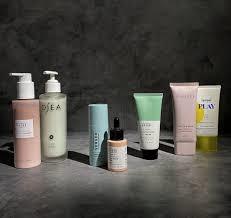






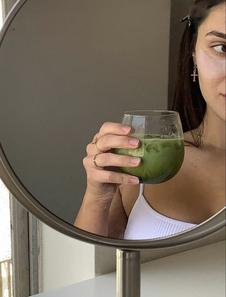
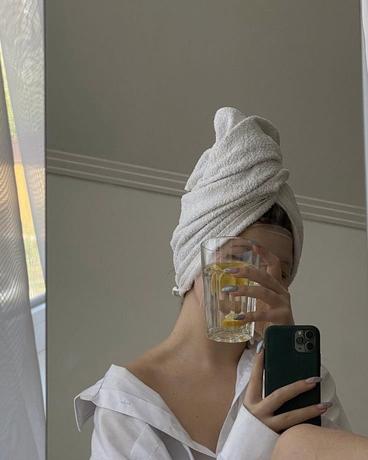























Areyoulivingyourbestlife?Yourcareer,your relationships,yourhobbies:areyoueffortlesslyfulfilling thesepartsofyourselfandlookinggoodwhiledoingit?If not,Ibetyouknowwhois:ThatGirl.
Atfirstglance,ThatGirlistheonewhohasanddoesitall,allthatyouwantfor yourself AndyetitisimpossibletofunctionastheuniversalidealthatThatGirlhas become,ThatGirlisessentiallyeveryoneandnooneatallasforeachindividual,That Girliswhowearenot.ThatGirlhasgrownintoaprominentdigitalcharacterusedto embodyouridealversionofourselves,andthustransitively,whatwelackinourdaily habits,ourpersonhood,ourgoals,ourlife
ButThatGirlisnotjustanaestheticpicture.Indeed,herdigitalpresencemakesher availabletoeveryone;bycreatingamisleadingreflectionoftheworldwhereyousee everyonebutyourselfasalreadyhavingachievedThatGirl'sstateofbeing,ThatGirl changesthewayweliveournon-digitallives.Invokingherinallherwayscreatesa narrativewherethepressuresfeltbyindividualsarefixablethroughindividualmeans. Ifyouarenotfunctioningatthisstandard,itisbecauseyouarenottryinghard enough:youarenotworkingoutenough,youarenotmakingtherightfriends,youare notdrinkingtherightgreenjuiceintherightquantities andCommencetheendless spiraling.ButPause.HowhasThatGirlcometomeansomanydifferentthings,keep usallfocusedonourselvesthroughthecriticalspectatingofotherssuchthatour scramblingenablesthisperpetualspiraling?Aswewillexploreandcritiqueshortly, ThatGirlisnotquiteanindividual,notquiteahashtag,notquiteanyonethingatall Whenweunderstandthismoredeeply,wecanchangethewaywerelatetoothers,in bothsharedidentitiesandindividualones,andallowourselvestobecomeThatwith whichwechose.
TheCreationTeamAbout the Cover: We introduce the elements behind and the illusion of the That Girl phenomenon to you in the cover of this zine One main visual characteristic of the That Girl ideal is one of a minimalist style through which she shows her aesthetic With simple composition and a monochrome scale, That Girl is focused and elegant without being thoughtlessly basic This effortless efficiency of That Girl is on display in the foreground: her work space is uncluttered and clean In our visual representation, That Girl’s workplace is her bathroom sink, a place to use the mirror and prepare herself to be observed In front of her lay various cosmetics and styling machines which she uses to materially mend her image, correcting her hair and emboldening her eyes with the tools society has sold to her In this space, That Girl becomes more than an online invocation of an ideal, instead becoming an individual responsible for her own appearance and habits, and subsequent success.
A look in the water’s reflection will show the undefined character of “That Girl” The one who performs, whose shadow functions to precipitate the striving of others A look in the mirror will show another side of That Girl The one who reflects and is a reflection of a multitude of her own efforts and societal pressures Here we see the time invested, money spent, and emotional labor yielded to achieve this presentation both borne of and creating her The chaos behind That Girl’s creation, dissemination, and internalization
SincerelyWho is #ThatGirl?
Vanessa Tiiu, a Youtuber and advocate of #ThatGirl’s (#TG) lifestyle, defines the trend as working out, nourishing one’s body, journaling, prioritizing mental health, in sum “growing to be the best version of you” in a way “[that] looks different for everybody ” Journalist Alice Porter reiterated the same, writing that #TG promotes “productivity and mental health” packaged in a highly aestheticized lifestyle with “clean, pastel desk setups and Instagram-worthy breakfasts ” So, while not declaring itself a feminist mantra, #ThatGirl suggests that the best way to become confident, beautiful, and successful is through highly curated, individual efforts of self-care and improvement
Despite Tiiu’s rejection of #TG as demanding adherence to a prescriptive routine, she models her day according to what women of similar gendered, class, and racial identities do And beyond this single image of beauty and wellness, #TG embodies an antidote for productivity, as Tiiu admits that since adhering to #ThatGirl’s routine, she “feel[s] a lot more productive, and get[s] a lot more done ”
A consequence of this particular look and routine, #TG symbolizes a “rigid aesthetic, one that totally lacks diversity,” that psychotherapist and eating disorder specialist Michelle Scott states, “[is] very whitewashed, almost as though ‘ThatGirl’ only looks one way ’” A quick Pinterest search loads various iterations of the same #TG: a white, thin and abled-bodied femme-presenting woman, flanked by images of workout sets, coffee, salads, to-do lists, and motivational quotes
climate change, unemployment, and never ending work, that acts as “[a] desperate attempt to make us feel like we still have some control over our lives ”
#ThatGirl, too, took form and rose to popularity amidst a global crisis: the COVID-19 pandemic The internet provided company to those isolated during lockdowns, while exacerbating mental health issues among the general populace and disordered eating and body image issues among women in particular The emergence of #TG, then, responds to what feels like an increasingly collapsing social order– one that exists beyond any individual’s control
Indeed, decades prior, Black, queer, disabled scholar, Audre Lorde, discussed self-care as a means to live in a system intent on “do[ing] you harm, or one that neglects you in such a way that your death is allowable ” Unlike #TG, though, Lorde conceived of wellness as communal, integrated into daily life, and a way to challenge the “crisis of wellness” amidst Reagan-era neoliberal reform
Contrastingly, #ThatGirl is an iteration of New-Age self-care intent on responding to worsening structural conditions, a space once defined by radical Black, queer, and disabled theory but since colonized by neoliberalism In theory, #TG upholds oft-forgotten forms of self-care, however in practice, the trend reproduces the same systems of oppression that it offers itself as a respite from
The trend thus
wellness for constant improvement and productivity, to be the “best version of oneself,” without consideration for the prerequisite for this standard of health, beauty, and work-life balance: wealth, whiteness, thinness, able-bodiedness, and a stable job
No matter such criticisms, Gen Z and Millennials embrace “New Age” forms of self-care, an emergent industry that positions individual behavior – purchasing consumer products, yoga, meditation, and mindfulness – as a common cure for waning wellness and productivity #ThatGirl is a manifestation of this trend, suggesting that anyone, so long as they adhere to a set list of wellness habits and fitness routine, can solve the ills plaguing their existing life
Surely, six years prior to #TG’s rise to fame, Laurie Penny wrote that structural concerns– a slowing economy, increasing class inequality, rising temperatures, and general loneliness – encourages this cultural turn inwards oriented around “ a modern mania for clean eating, healthy living, personal productivity, and ‘radical self love ’” It is the increasing focus on “individual fulfillment,” rather than collective solutions to
This individualized turn toward wellness and self-care first rooted itself in the U S as neoliberal economic policy Theorized amidst the 1940s, but embedded in socio-economic reform beginning in the 1970s, neoliberalism, Dr David Harvey argues, casts individual liberty, free market and trade, and entrepreneurialism as the bastion of “human well being ” Now as a hegemonic form of governance, neoliberal rhetoric justifies removing the state “from many areas of social provision,” best represented by Reaganometrics delegating healthcare to an individual, privatized concern Despite its emergence first as an economic principle, Harvey contends that “the process of neoliberalization has entailed much ‘creative destruction’” of political institutions, technology, and social “ways of life and thought ”
In her exploration of neoliberal feminism, Professor of Sociology Dr Rottenberg describes neoliberalism as not simply an “economic perspective” but also a “modality of governmentality” that reframes life in terms of entrepreneurial pursuits, making the individual an isolated and “active subject responsible for enhancing their own well being ” Like neoliberal feminism, #TG acts as self-care’s neoliberal reproduction, making wellness an individual task despite recent mental health crises largely reflecting structural, social ills This individualized self-care makes any social organizing impossible, by keeping the #TG aspirants constantly working towards their own well-being and care according to unachievable standards
While #TG’s recommendations, in part, promote slowing down and caring for oneself, content creators craft TikToks and Pinterest posts of #TG as achievable through a checklist, suggesting that these “recommendations” have an underlying prescriptive nature (see Image Two)
 Im
lauds
Im
lauds
The array of online ‘to-do lists’ and ‘monthly challenges’ redefines selfcare as an individual pursuit, constructed around the 9 – 5 work week Calls to rise early and exercise before work, like neoliberal variants of the past, frames all of life as a potential avenue to improve your work performance Similarly it tasks #TG aspirants with constant and continuous labor – one’s ‘to-do list’ does not begin at your job, but start in the early hours of the day
This additional, unpaid labor is a vehicle of what philosopher and historian Michel Foucault described as western societies’ new form of power: one of dispersed, (assumed) constant surveillance and, by consequence, indefinite control As Foucault discussed regarding the panoptic prison, #TG in particular and neoliberalism in general acts as a way for “measuring, supervising, and correcting the abnormal” in order to build the most optimal worker It reorients individuals toward particular and never-complete to-do-lists intent on keeping those deemed “abnormal” (e g , persons/social groups devalued by hierarchies of sexism, racism, ableism, etc) preoccupied with productivity In practice, then, #TG undermines collective organizing and corporate accountability, “placing the onus of responsibility for worker well-being on the employees themselves” whilst simultaneously providing femme-presenting individuals a new standard of beauty, productivity, and wealth to continuously work toward
Consequently, #TG acts as a new arm of neoliberalism focused on legitimizing existing structural inequalities and promoting efficiency and productivity (via prescriptive, all-consuming tasks meant to bolster one’s work endeavors) It is precisely because power is dispersed online that #TG's routine makes women preoccupied and unable to challenge larger structures of oppression that make this self-care necessary
Like Harvey’s discussion of neoliberalism’s enactment of “creative destruction,” Dr Rottenberg describes neoliberalism as “colonizing” discourse She argues that its ability to “colonize,” or absorb its critics to reduce their critical potency, is integral to its survival Indeed, Dr Rottenberg claims feminists no longer challenge hegemonic systems of oppression, and instead are “perfectly in sync with it ” One may view self-care too, then, as an additional discourse community that “neoliberal governmentality colonizes and remakes in its own image ”
In Stuart Hall’s analysis of language as a circuit of communication, he describes that there exists a constant “struggle over meaning and language” present between the encoder and decoder Words, he argues, have both denotative and connotative meanings that the encoder uses to imbue, and the decoder uses to derive value from Both processes, though, present equal opportunity to construct, deconstruct, and alter meaning
Dr Rottenberg extends Hall’s discussion– arguing that neoliberal feminism takes advantage of language’s permeability and polysemic meaning to “creatively deconstruct” previous liberal discourse She contends that neoliberal feminists adopt previous feminist language, associating well-known phrases– “equality, equal opportunity, and free choice”– with different signifiers, in turn altering the phrases’ dominant cultural meanings Surely, neoliberal feminists reframe “equality for all” from a collective revolution to an individual pursuit led by “one woman at a time” within existing capitalist frameworks Thus, the “creative destruction” of language redefines its meaning for the benefit of neoliberal imperatives.
New Age self-care has, like neoliberal variants of the past, colonized, creatively destructed, and constructed new meaning from previous self-care movements Sara Elly, content creator and viral #ThatGirl TikToker, shared that “what appealed to me most [about #ThatGirl] is the active support system made up of a community of people that wanted to do better ” While Elly appropriates “community”-based rhetoric, signifying group care and support, she refers to internet users who document their day adhering to a highly individualized set of tasks
This rhetorical “colonization” is common online; Elly’s exhortation of #ThatGirl for its perceived community-based self-care has history in Black, queer, and disabled thought As Journalist Newman-Bremang scathingly reports, “we all know the [Audre] Lorde quote that dominates our timelines It’s so prevalent, it’s become a cliche:
“Overextending myself is not stretching myself I had to accept how difficult it is to monitor the difference Necessary for me as cutting down on sugar Crucial Physically Psychically Caring for myself is not self-indulgence, it is self-preservation, and that is an act of political warfare ”
The promulgation of such rhetoric removed from its original context, Audre Lorde’s A Burst of Light, dilutes the political power of self-care from resisting structural oppression and prioritizing community care, to drinking green juice after your morning run While #TG recommendations are not innately bad, even similar to Lorde’s requests to “cut down on sugar,” its all-consuming nature and centrality of 'improved' work/aesthetic outcomes effectively appropriate self-care rhetoric to mask its neoliberal “creative destruction ”
Schalk & Kim (2021): The Queer Crip Critique of Self-Care

In A Burst of Light (1984-7), Lorde documents her experience with cancer, the “medical industrial complex, alternative medicine, weight loss, [and] pain ” In their analysis, Sami Schalk and Jina Kim argue that Lorde tied self-care “to the lived experiences and temporalities of multiply marginalized people, especially disabled queer people, disabled people of color, and disabled queer people of color ” As such, Schalk and Kim claim that New Age self-care (e g , #ThatGirl) appropriates discourse from the disabled community in attempts to extend neoliberalism’s arms to a new space Unlike #ThatGirl’s push for productivity and care that supports capitalist and patriarchal imperatives, Schalk and Kim assert the necessity of self-care as being separate from these institutions altogether
While #ThatGirl adapts her wellness routine to the workday, Lorde did not regulate self-care to her “personal time [or] adapt [it] to a fortyhour work meet or a nine to five job ” Wellness, Lorde argued, should be “integrated into living life consistent ” This more mundane self-care thus disavows #ThatGirl’s hyper-prescriptive wellness routine intent on working with and supporting a life focused on capital accumulation Schalk and Kim contend that disability theory, rather than the ablebodiedness inherent to #TG, was “central to Lorde’s conceptualization of self-care ” Lorde leveraged care to extend the pleasure of her remaining time, not to meet the various demands imposed by existing structural conditions
Additionally, unlike #ThatGirl, Lorde thought condemning socioeconomic policies that sought “to make live and let die” crucial to selfcare In her diary entries, Lorde critiqued Reagan’s neoliberal government intent on providing its citizens as little social aid as possible In this way, Lorde conceived of self-care outside of #ThatGirl’s individual frame; beyond her personal wellness, Lorde condemned poverty and “structural violence on national and international scales” that made others' self-care impossible
Lorde also was aware of how her social positionally impacted her relationship to self-care As a Black, queer, disabled woman living under Reaganomics, her self-care was not 'prescriptive,' but highly contingent on her identity and relationship to her socio-political context So while A Burst of Light is a personal account of her life, Lorde discusses selfcare as being inextricably linked to her writing and political activism For instance, Lorde equated education with self-care, describing efforts to be an active “participant in decisions made about my body,” stemming from the medical-industrial complex’s proclivity to discount experiences of Black, queer women
Image Two Screenshot of #ThatGirl’s Pinterest Search Results#ThatGirl’s origins lie in a neoliberal tradition of “creative destruction,” a “colonization” of discourse promoted by Audre Lorde in the 1980s While self-care was first a response to neoliberalism, it now sustains the structures it once rebuked As a well-being ideology on an increasingly visible online forum, TikTok, #TG is meant to keep femmepresenting people preoccupied, and stretched to their limit with work optimization
I hope that eventually, we come to view self-care as Lorde did," learning the difference between extending and stretching oneself Our world is taxing We would do good to take Lorde's advice in its entirety To try to challenge and change an often unfriendly world demands that we seek an “enormous amount of mutual, consistent support for us to be emotionally able to look straight into the face of the powers aligned against us and still do our work with joy ”
About This Work: Using water as a vehicle to travel through this visual narrative, here we consider the creation of That Girl and what she professes to stand for Self-care in its variants are hinted through the dismembered octopus limbs While necessarily connected to a center, it is now neither in command nor visible. This reflects how the meaning of self-care has been appropriated into a motto and ideal serving That Girl, and people are sucked into it, moved by the waves of its changing meaning While each face is an individual image, they can also be interpreted as copies but copies of what? (The center that does not exist )
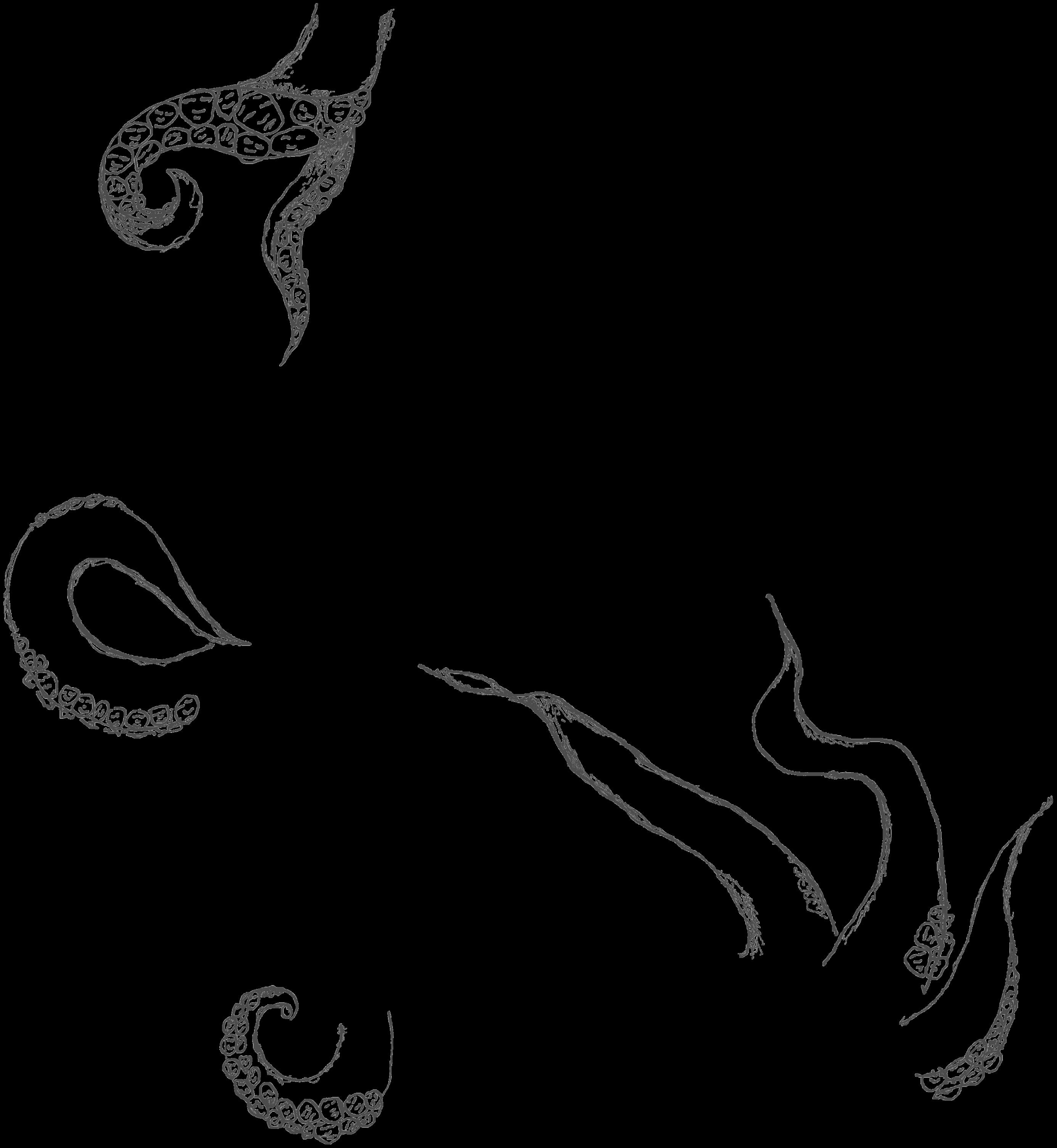
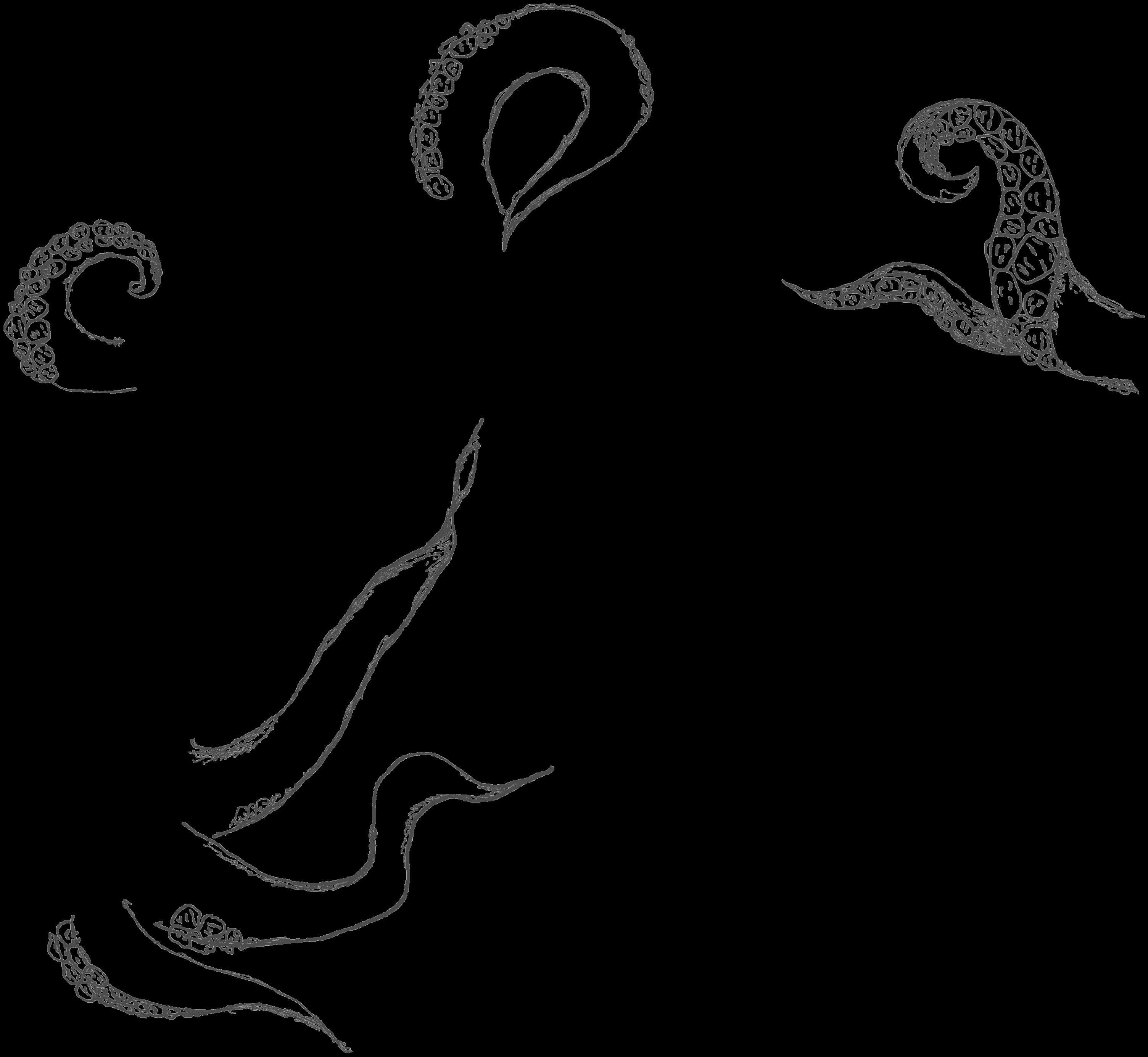



The cycles of “That Girl” trends cannot be examined without understanding the way that the trends pick up speed and how they truly “go viral ” While women’s bodies have always been a focal point of media (as Berger points out in “Ways of Seeing” with the old examples of women as objects of art), the existence of the internet and social media in particular has made it infinitely easier to share content “That Girl” can be found under hashtags like #thatgirl or #tg, filled with visuals of white, minimalist rooms, hundreds of dollars worth of self-care and makeup products, and extended explanations of how to achieve the elusive lifestyle of the mystical “it” girl Thanks to the handy algorithms that curate content for users on social media, trends begin to emerge to game the algorithm, so that content creators can generate more interaction with their posts To do this, the triedand-true classic object of media (women’s bodies) becomes commodified, distilled down to bits and pieces to drive engagement Using Hall’s definitions of encoding and decoding, we can examine the way this commodification reinforces already existing ideas about what gives women value
The expectation when experiencing online spaces is active participation (Rettberg 13), whether that be in trends or in engagement “Lurking” is looked down on The push to create content that fits with what others are producing is part of the reason that trends on social media spread so quickly Peer communication in trading content in digital spaces “write[s] [the self] into being” (Rettberg 13), both creating and perpetuating the narrative of a trend As more and more people participate in a trend, the object of the trend becomes an idealization for real life, extending past its original role as a participation in online culture. Users that create content for those with “That Girl” aspirations make detailed, step-by-step guides on how they achieved the lifestyle, ostensibly so that consumers of the content can follow along The content is not made just to be looked at, instead, it is made to be replicated The replication pushed out more content, and more engagement with the “That Girl” topic makes it more accessible as the algorithm pushes more popular topics forward for consumption
Another aspect of social media that causes trends to spread quickly is the way that they are sorted for viewing Researchers Drenten and Gurrieri looked at how dissemination of online trends happen, and found that the way posts are organized is a huge part of what gets circulated for more views Most often, this organization comes in the form of hashtags (Drenten & Gurrieri 52) They are a useful functional tool (to categorize similar posts with one another), but they have also become a “cultural genre,” wherein hashtags have become a way to continue to build the narrative seen in the actual substance of a post (Drenten & Gurrieri 52) Where someone might be participating in a selfie trend to show their face looking a certain way, they may “tag” the post something like #selfiesareawkard or #firsttry, which creates “metacommunication” (Drenten & Gurrieri 52) to consumers of the digital content
that helps the narrative of a trend to transcend its existence solely in the online Instead, it creates an imagined scenario where the content creator exists in a state that is camera ready all the time, where they can escape the “awkwardness” of selfies or take one picture without much effort and existence solely in the online Instead, it creates an imagined scenario where the content creator exists in a state that is camera ready all the time, where they can escape the “awkwardness” of selfies or take one picture without much effort and still fit into the beauty standard set forth by a trend “That Girl” participates in this metacommunication with accompanying hashtags like #bethatgirlwithme, which invites the viewer into the creator's world, making the video a possible reality, or #cleangirlaesthetic, which creates a whole subsection of the “That Girl” idolization, building a bigger narrative about the qualities “That Girl” holds, and how “she” behaves – unbothered, no-makeup-makeup, ultra-hydrated, and existing mostly in non-offensive neutral colors and simple design
Because “an event must become a ‘story’ before it can become a communicative event” (Hall 91), the effective creation of this metanarrative, which brings digital trends to material spaces, is what makes the examination of “That Girl” trends so important. Especially on Tik Tok, it seems like every new trend becomes deeply entwined with personas for people to fill, with the suffix “-core” or “aesthetic” tacked onto the back of a style, effectively turning it into a lifestyle trend The “clean girl aesthetic” begins to go beyond a no-makeup-makeup look, as people show off “grwm” (get ready with me) videos filled with hundreds of dollars worth of products and extensive morning routines, neither accessible nor manageable for everyone to achieve, but desirable nonetheless
The aesthetic becomes projected as a lifestyle, something that consumers of this content should aspire to It becomes a story, and thus communicates beyond the narrative of the original trend Though the aesthetic is deeply concerned with the self, the language surrounding it still encodes values that are deeply ingrained in our culture and presses its ideals onto outsiders as well, even without explicit statements: the popularization implies that if you are not “clean,” you are “dirty ”
To find evidence that trends like this communicate the messages about those who don’t (or can’t) participate in trends, you don’t have to look further than meta-analyses of body image and social media usage Media usage is negatively correlated with women’s body image and is also connected to higher rates of investment in appearance and participation in disordered eating (Drenten & Gurrieri 50) The encoded messages in these trends (being a “clean girl” is good) are taken in by women decoded using “frameworks of knowledge” (Hall) that women are taught from society, which adds another dimension to the message being received (not being “clean” is bad)
Why this art?: Social media has become an integral part of the way the world works The expectation of participation means that while users are constantly taking in content, they are also contributing to the volume of available content for consumption, a self-sustaining cycle This work depicts a genderless figure as part of this consuming-producing cycle, showing how connected we all are to the online world
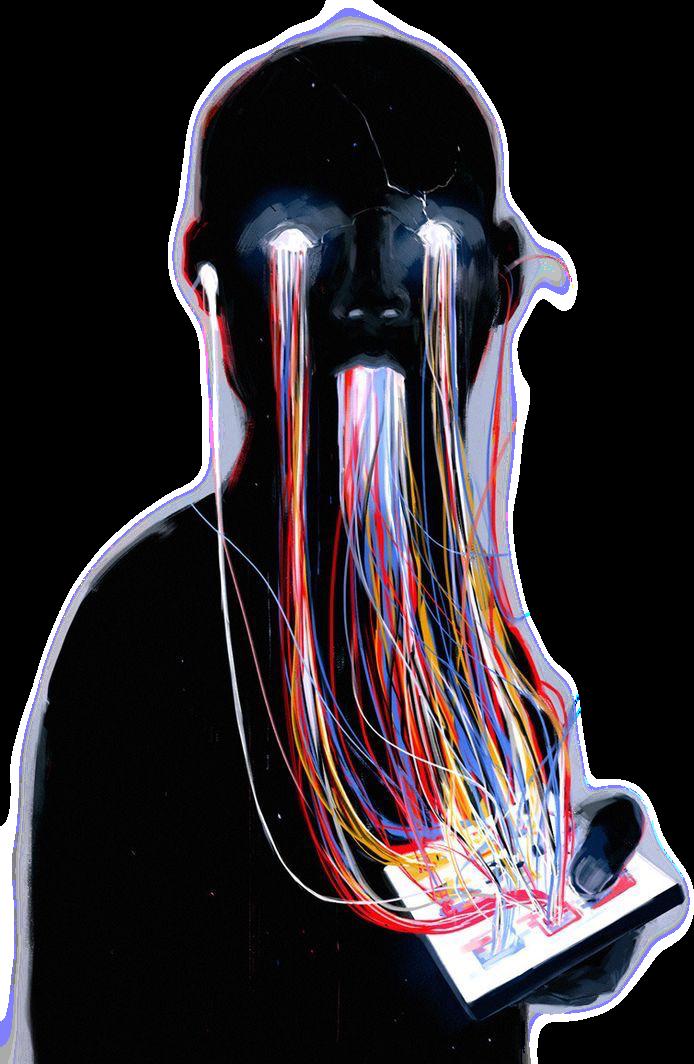
About This Work: On one hand, That Girl informs us of what we desire for ourselves (or what we are supposed to strive for ourselves) On the other hand, it is a constant reminder of our system failures (as perceived by society) The potency behind the meaning of That Girl exists because of its circulation which is not unlike an error message flashing across your computer screen, one that you do not quite know which misstep prompted and yet you cannot continue forward without appeasing When That Girl exists as an online phenomenon, she is (apparently) separate from the natural And yet her potency leaks into the ‘natural’ world in the way people change to appease–please– her just for the sake of continuing forward. We are accomplices without awareness When we think about the consequences, we may get a shock, like a jolt of electricity, as if we stepped into an electrified spillage of water that we had not noticed before




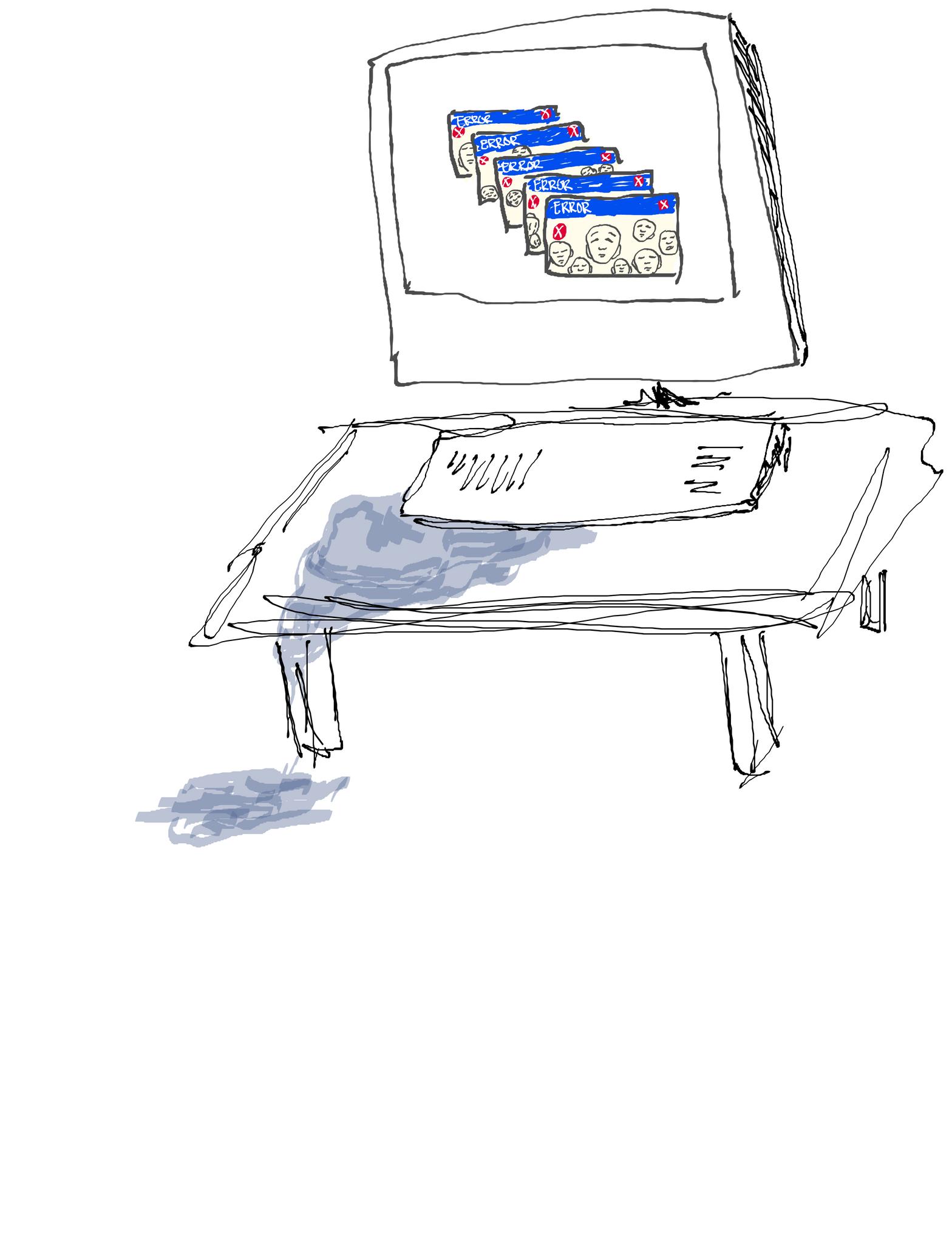





Your hands rub against your eyes as you blink the sleep out of them, a blurry world coming into focus You fumble under your covers in an attempt to find your phone, as you check the time, the realization hits you: it’s 11 AM You turn to TikTok to nudge away the remnants of your slumber when suddenly, you are reminded that you have wasted half of your day and you wonder what you could have done in the time that your body was catching up on much-needed sleep
In That Girl’s life, the light streams through her windows, sunshine tickling her awake at 6 AM–how is that even possible when the sun hasn’t risen yet–never mind that, she’s well rested and her hair already looks perfect She goes to the gym, showers, and makes breakfast and a green smoothie all before you have even considered waking up Your lazy scrolling on TikTok is interrupted by her montage of the perfectly productive day as you realize you are still in bed, and during the 38 minutes you have been on your phone, she has been reading and learning how to better herself, and you have accomplished nothing by her standards
So, why is it that we feel so horrible after interacting with media that depicts this #ThatGirl?
That Girl is no one, yet somehow she is everyone Many “That Girl” or “Clean Girl” aesthetic videos refrain from including someone’s face and only show glimpses of a figure, a side of a face, a polished hand writing in a journal, a silhouette of a meditating back This ambiguity leads to the internalization of That Girl as the caption shouts at you, “this mystifying figure could be you!” As we internalize this idea, she becomes the standard of comparison for ourselves and others
She is constantly performing, in an attempt to control how others view her and her success Therefore when That Girl’s aesthetic pops up on your For You Page, her presence reminds us of how she continually shapes the perception of her, and the internalization takes place And once this internalization has taken hold, we cannot let go This aesthetic is “born-digital,” meaning that rather than being a digitization of an earlier form, it has always been a digital object and practice (Shah 87) Therefore it remains important to remain wary of the candid aesthetic and seemingly unstaged clips of That Girl’s extensive daily routine because although it looks natural, her lifestyle in actuality has been layered, manipulated, and carefully posed to ensure that you are reminded you cannot be That Girl

She maintains a positive mindset through it all, never wavering or showing any sign of instability, or heaven forbid, taking a slow day This aesthetic is dependent on getting you to buy into her definition of success, which means constantly working to improve yourself However, once you have internalized her desire for you to perceive her in the #ThatGirl light, is it her that’s making you feel bad about yourself, or is it a larger societal issue?
Her never-ending quest for self-betterment is reminiscent of the idea of welfare capitalism Capitalism hinges on the desire for profit and creates innovation or competition, however, it also relies on buying people into an idea (Tippett) For instance, some employers offer benefits such as free dry cleaning, oil changes for your car, free food, and gym memberships, all in the comfort of your own workspace! But why offer so many amenities? By creating an environment where you don’t want to leave, you become expected to work longer hours and contribute more or become another cog in the machine so to speak
Foucault’s concept of the panopticon comes to mind here, as we internalize this fear that we are not being as productive or creating as much output as we can given our input With That Girl’s videos, we see snippets of her seemingly candid life, small bits that remind us that our day-to-day life does not look like hers When these ideas become internalized alongside what capitalism tells us, we feel as though we are being watched by an invisible force As you lounge around, the guilt that creeps into your headspace becomes the guard and you, the prisoner, making you rethink all the ways that you could be doing more, even when no one is actually watching
We are constantly encouraged to believe that this is what is right and natural This notion of welfare capitalism is not explicitly said but it is felt and very prevalent when we base our worth and value on how productive we’ve been that day The aesthetic and neverending productivity of That Girl convinces us that the perfect girl and perfect femininity is always put together, organized, and constantly improving her productive output That Girl utilizes this philosophy and shrouds the damaging mindset in bright aesthetic shots of her skincare and lemon mint water
In Berger’s “Ways of Seeing,” he emphasizes the importance of the social presence of a woman and the capital it holds for her She is constantly being watched, by the male, but also from within (Berger 47) Though it may not feel as though there is seemingly little influence of the male gaze, That Girl still upholds a certain standard of beauty: tall, skinny, and more often than not, white Laura Mulvey defines the male gaze as presenting women and femininity from a “masculine, cisgendered, heterosexual perspective that presents and represents women as sexual objects for the pleasure of the heterosexual male viewer” (“The Male Gaze”) Though That Girl does not constantly journal, read for pleasure, or wear her matching workout set for the pleasure of men, her life is framed through a cisgendered and heterosexual perspective that depicts femininity in a certain way: bright, clean, optimizing her time and energy, and beautiful with seemingly little effort

Why this art?: Our perception of That Girl is obscured by layers although her aesthetic seems clear and transparent there are many pieces of her hidden away Although we are given glimpses into her day that is all they are As represented by the bubble wrap we get to see a packaged version of That Girl, often obscuring her true identity to convince us all that we can one day be her if we just follow her lifestyle

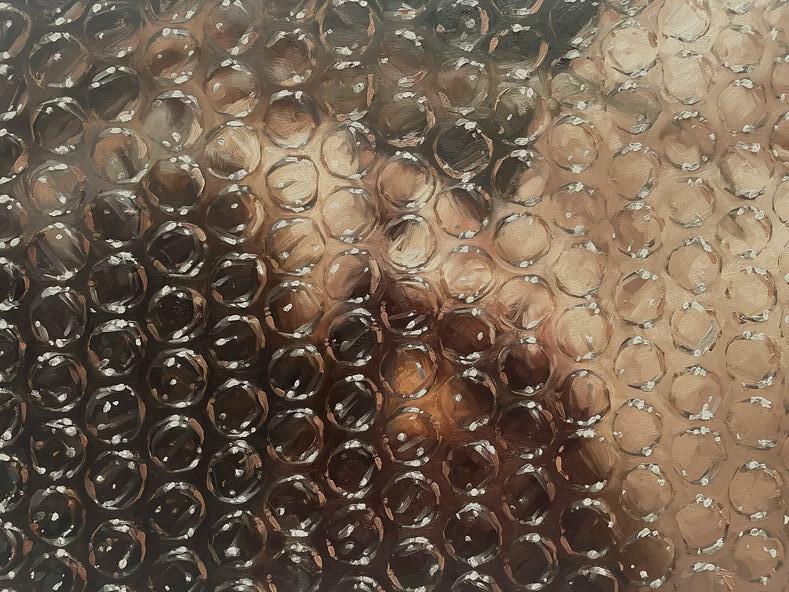
There is something captivating about her, something untouchable and undisturbable in her sense of peace of her presence in this world The idea of #ThatGirl is embodied in minimalist cleanliness, constant selfbetterment, and most importantly, groundedness and success–yet her possession of these traits feels like an emphasis on your lack of them That Girl radiates success, almost creating a forcefield of energy or an aura around her that cannot be touched Berger reiterates this notion, stating “a woman’s presence expresses her own attitude to herself, [ ] Her presence is manifested in her gestures, voice, opinions, expressions, clothes, chosen surroundings, taste–indeed there is nothing she can do which does not contribute to her presence” (Berger 46) This presentation demonstrates how she desires to be treated: with intention, elegance, and constant selfbetterment
So when you wake up at 11 AM and the sun is already high in the sky, remind yourself, That Girl is made to be unattainable She is made to be unsustainable, to disguise capitalism in a pretty package all for your consumption, and to convince yourself that you should be doing more Fight the cognitive dissonance that tells you that your worth lies in how much you can get done in a day Because we promise, no amount of green smoothies, avocado toast, gym sessions, or getting up early will make you feel fulfilled when the standard you are comparing yourself to is fabricated Define your worth in doing your best, because that is the only lifestyle that should ever matter
About This Work: To conclude That Girl’s process (as you see it), she takes on both an individual and a non-digital form without conceding any realness Despite the photographic medium, which might have validated her material existence, the white shadow over her hides her identity and complicates her form Indeed, this shadow is an imitation of the ‘ghost trend’ which is already existent online in TikTok videos and in the album art of singer Phoebe Bridgers Complementing the imitation, there is irony in drinking water: an action that we must do to sustain our material life but when prescribed by That Girl can harm more than nourish As we conduct our life in both online and material spaces, we can reflect on the ways we internalize–ingest– phenomena such as That Girl
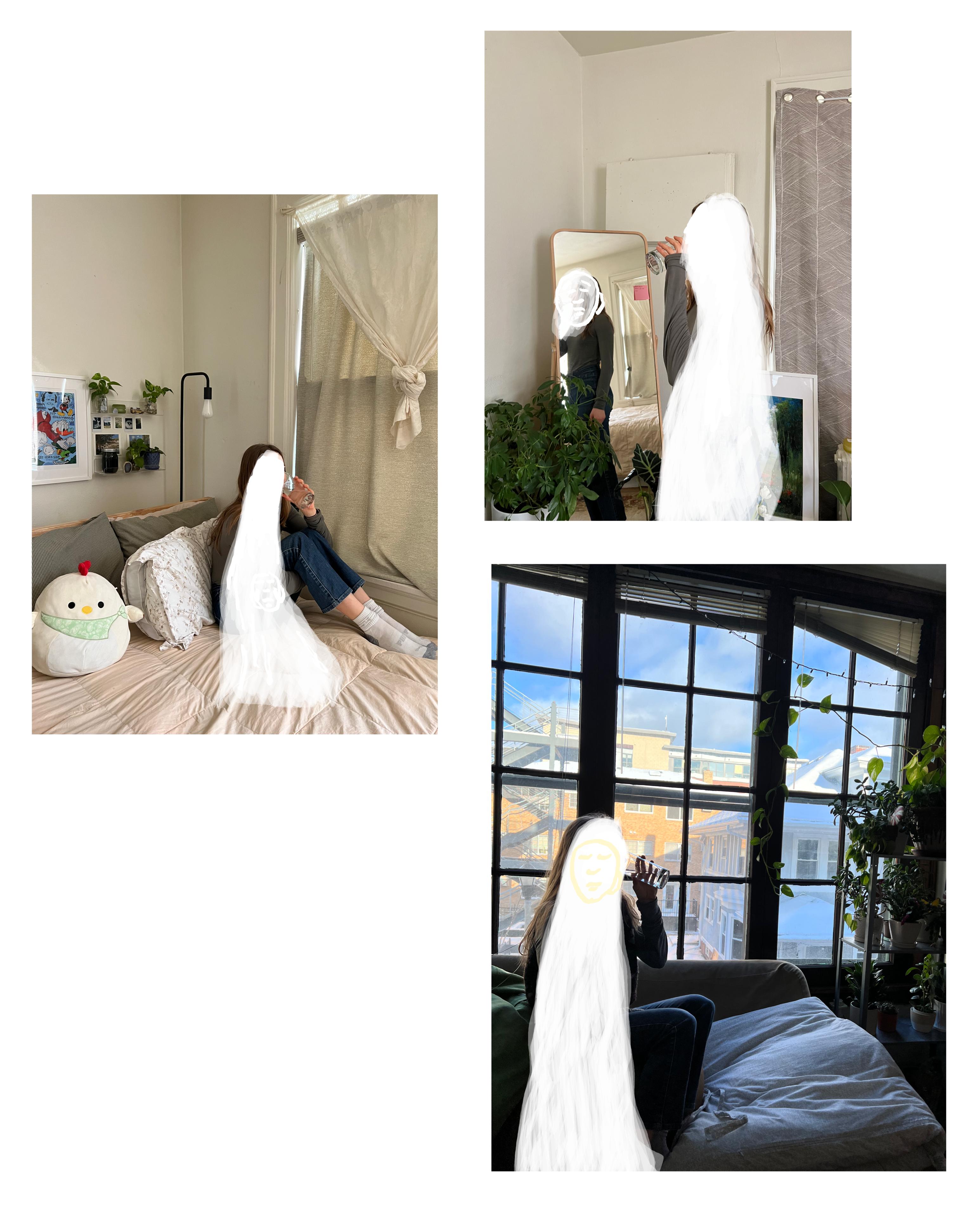
From Group Care to Individual Critique: #ThatGirl and the Neoliberalization
Foucault, Michel “Panopticism ” In Discipline and Punish: The Birth of the Prison, 195–228 New York: Vintage Books, 1975
Hall, Stuart “Encoding, decoding ” In The Cultural Studies Reader, edited by Simon During, 90-102 Abingdon: Routledge, 1999
Harvey, David A Brief History of Neoliberalism Oxford: Oxford University Press, 2005
Kim, Jina B , and Sami Schalk “Reclaiming the Radical Politics of Self-Care: A Crip-of-Color Critique ” South Atlantic Quarterly 120, no 2: 325-342 https://read dukeupress edu/south-atlantic-quarterly/articleabstract/120/2/325/173307/Reclaiming-the-Radical-Politics-of-Self-CareA-Crip?redirectedFrom=fulltext
Lorde, Audre A Burst of Light: and Other Essays Garden City: Dover, 2017
Mears, Ashley “Aesthetic Labor for the Sociologies of Work, Gender, and Beauty ” Sociology Compass 8, no 12 (2014): 1330-1343 https://compass onlinelibrary wiley com/doi/abs/10 1111/soc4 12211
Penny, Laurie “Life-Hacks of the Poor and Aimless ” The Baffler July 8, 2016 https://thebaffler com/warof-nerves/laurie-penny-self-care
Porter, Alice “#ThatGirl is taking over TikTok, but what’s behind the viral trend and why is it potentially doing more harm than good?” Glamour October 25, 2021 https://www glamourmagazine co uk/article/that-girl-tiktok
Robertson, Mackenzie et al “Exploring changes in body image, eating and exercise during the COVID-19 lockdown: A UK survey ” Appetite 10, no 105062 (2020): 1-17 https://pubmed ncbi nlm nih gov/33278549/#: :text=DOI%3A-,10 1016/j appet 2020 105062,Free%20PMC%20article
Rottenberg, Catherine “The Rise of Neoliberal Feminism ” Cultural Studies 28, no 3 (2014): 418-437 https://www tandfonline com/doi/abs/10 1080/09502386 2013 857361
Tiiu, Vanessa “The Ultimate Guide to Being “THAT Girl ” Youtube Video, 16:44 June 11, 2021 https://youtu be/G8Fq1rL2nm0
Silva, Christianna “The Millennial Obsession With Self-Care ” NPR June 4, 2017 https://www npr org/2017/06/04/531051473/the-millennial-obsession-with-self-care
Perpetuating the "That Girl" Narrative
Drenten, J , & Gurrieri, L (2018) Crossing the #bikinibridge: Exploring the role of social media in propagating body image trends In A C Scheinbaum (Ed ), The dark side of social media: A consumer psychology perspective (pp 49–70) Routledge/Taylor & Francis Group https://doi org/10 4324/9781315167718-4
Hall, Stuart “Encoding, decoding ” In The Cultural Studies Reader, edited by Simon During, 90-102 Abingdon: Routledge, 1999
Rettberg, J W (2014) Written, Visual and Quantitative Self-Representations In: Seeing Ourselves Through Technology: How We Use Selfies, Blogs and Wearable Devices to See and Shape Ourselves Palgrave Macmillan, London https://doi org/10
Berger, John “Chapter 3 ” Ways of Seeing, BBC and Penguin, 1972, pp 45–64
Foucault, Michel “Panopticism,” From Discipline and Punish, 195-228
Mederos, Darian "Lucid Dream III " 2021 https://www darianmederos com/artwork?lightbox dataIteml7htmtnj
Shah, Nishant “The Selfie and the Slut: Bodies, Technology and Public Shame,” Review of Women’s Studies, 86-93
Tippett, Elizabeth C “Welfare Capitalism: How Employers Use Wellness & Perks to Control Employees ”
The Thirlby, The Thirlby, 2 Apr 2021, www thethirlby com/thejournal/2021/4/2/welfare-capitalism-howemployers-use-wellness-amp-perks-to-control-employees